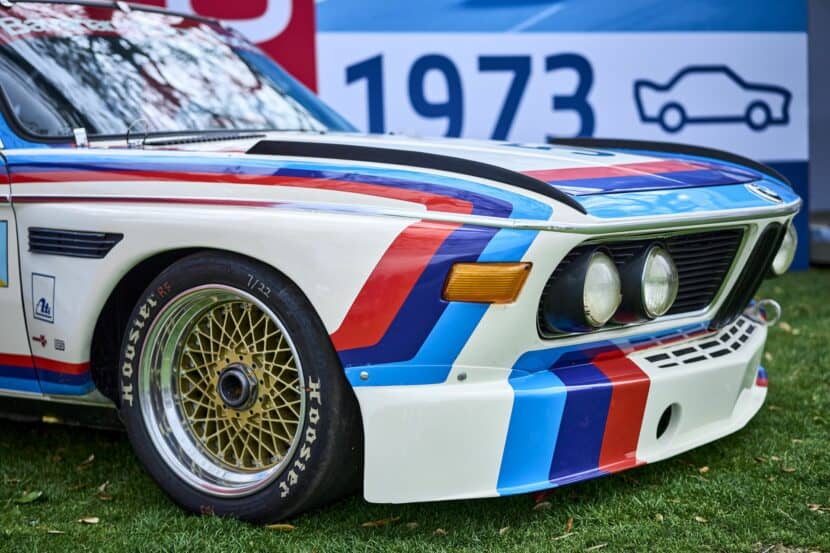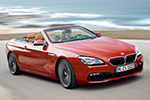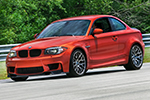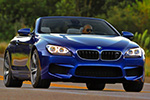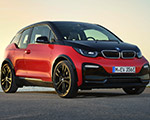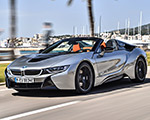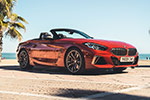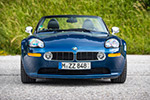When MINI revealed the Concept Frankfurt at the 2005 Frankfurt Motor Show, it was marking two milestones at once: the 45th anniversary of the 1960 Mini Traveller and the brand’s own modern rebirth, which had first been shown to journalists in Frankfurt back in 1997. But this wasn’t just a trip into the past of the iconic British marque. The design study reinterpreted the original Traveller’s compact, versatile estate shape with modern engineering, clever packaging, and a few unexpected touches. The result was a car that looked unmistakably like a MINI, yet shared almost no panels or proportions with the production hatchback of the time.
Familiar Face, Different Proportions
From the front, the Concept Frankfurt had the hexagonal grille, round headlamps, and short overhangs you’d expect. But the stance was wider, the wheelbase longer, and the body stretched into a proper estate form. The shoulder line rose gently toward the rear, giving the profile a wedge-like energy. Muscular arches and a powerdome bonnet added a more assertive feel, while the headlights were integrated directly into the one-piece engine lid, which hinged forward like a classic sports car’s.
The paint was a custom Satellite Silver, applied in two subtly different layers so it shifted from bright metallic to muted grey depending on the light. Around the wheel arches and lower body sat black neoprene trim—not just for contrast, but for its tactile, resilient quality. Brushed aluminum C-pillars and grille details nodded to the Traveller’s heritage, and frameless glass wrapped the cabin without interruption, thanks to the deletion of the B-pillars.
Doors, Windows, and Roof: Rethinking Access
All four side doors used parallelogram hinges, swinging both outward and forward in a single motion. It reduced the space needed to open them in tight spots and made entry easier. The front coupe-style doors were unusually long—over 1.6 meters—and, with no B-pillar, created an open, uninterrupted side aperture when both front and rear doors were open. The rear side windows were a modern reinterpretation of the Traveller’s split panes. The front section slid down electrically beneath the rear section, and when both were open, the effect was more like a convertible coupe than a small wagon.
At the back, the Concept Frankfurt wore a symmetrical, side-hinged double-door setup for the boot, making loading easy from either side. Above, a full-length glass sunroof stretched from windscreen to tailgate—and the rear section could open upward completely, allowing long items to be loaded from above.
The “Cargobox” and Clever Storage
Inside the luggage compartment sat one of the concept’s most practical ideas: the “Cargobox.” This sliding floor extended out of the boot for easy loading, with a swivel function that let it double as a partition between passenger space and cargo. Even with the rear seats in place, the load sill was low and access generous. Fold the individually-split rear backrests flat, and the boot floor became one continuous surface all the way to the dashboard.
Even smaller touches were designed for usability, like frameless windows in the rear doors for quick access to the cargo area, and chrome-ringed cupholders that folded down from the side vents—keeping drinks cool or warm depending on the climate control setting.
Floating Seats and Open Space
The interior carried through MINI’s circular design language but pushed the sense of space further. The front seats appeared to “float,” mounted to the central console instead of floor rails, freeing up legroom for rear passengers and keeping the floor clear. An electric Easy-Entry system moved the seats forward and rotated them inward for rear access, then returned them automatically. Seatbelts were integrated into the seat frames themselves, eliminating the need for fixed B-pillars.
Materials were high-end but adventurous: white leather in multiple grains, brushed aluminum, chrome rings, and even glass-fibre weave in the door panels. The roof lining was finished in Alcantara, while the footwells got a metallic carbon-look finish.
Performance with Familiar MINI Feel
Beneath the bonnet sat a MINI Cooper S R53 power unit, complete with an air intake scoop and dual tailpipes. The long wheelbase, wide track, and wheels pushed to the corners were intended to preserve the brand’s “go-kart” driving feel, even with the larger body.
The MINI Concept Frankfurt wasn’t a throwaway motor show fantasy. Many of its ideas would resurface in later production MINIs, especially the Clubman. But even as a one-off, it showed that a small car could still surprise with thoughtful design, clever engineering, and an unapologetic nod to its own history.






























